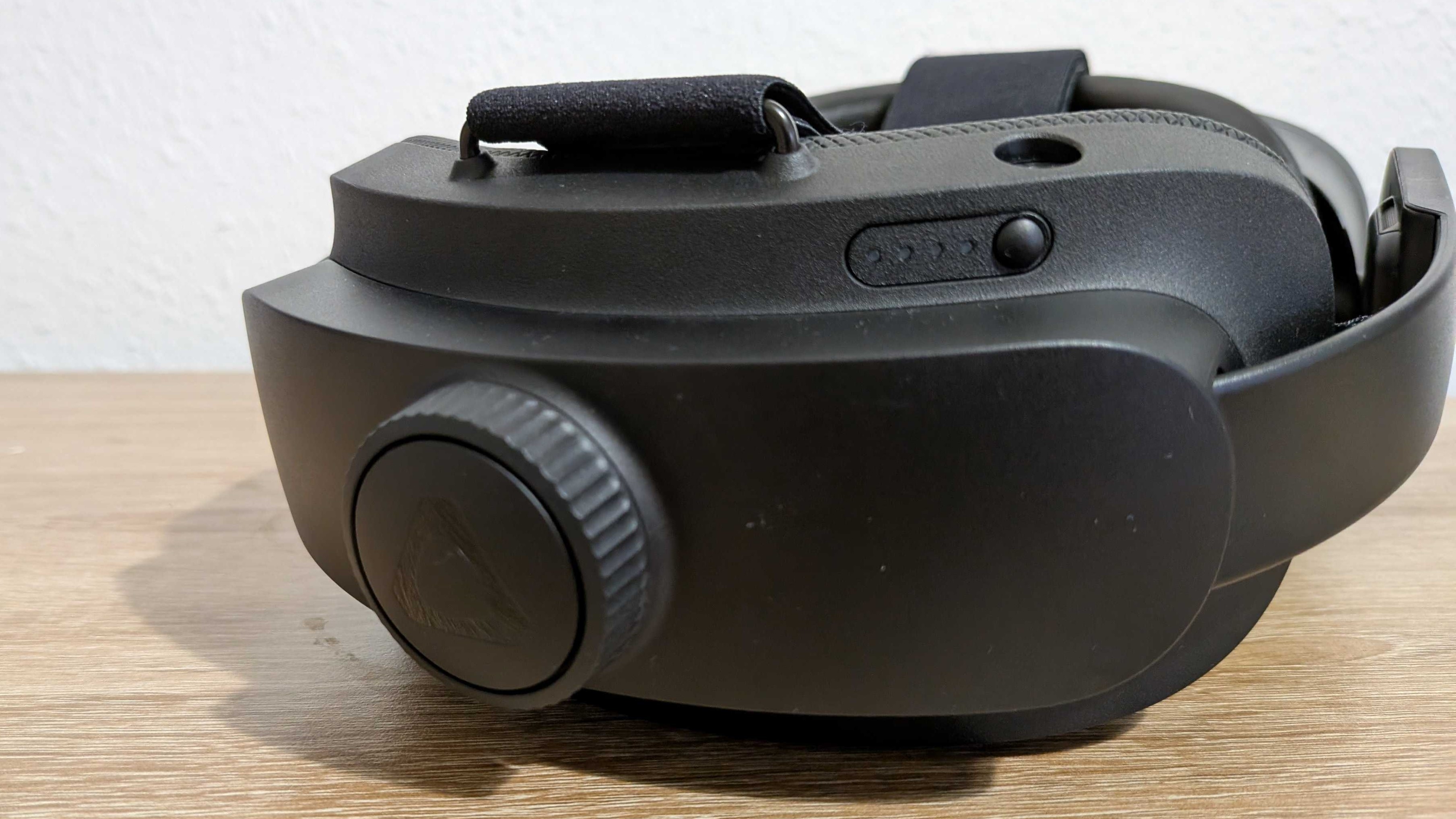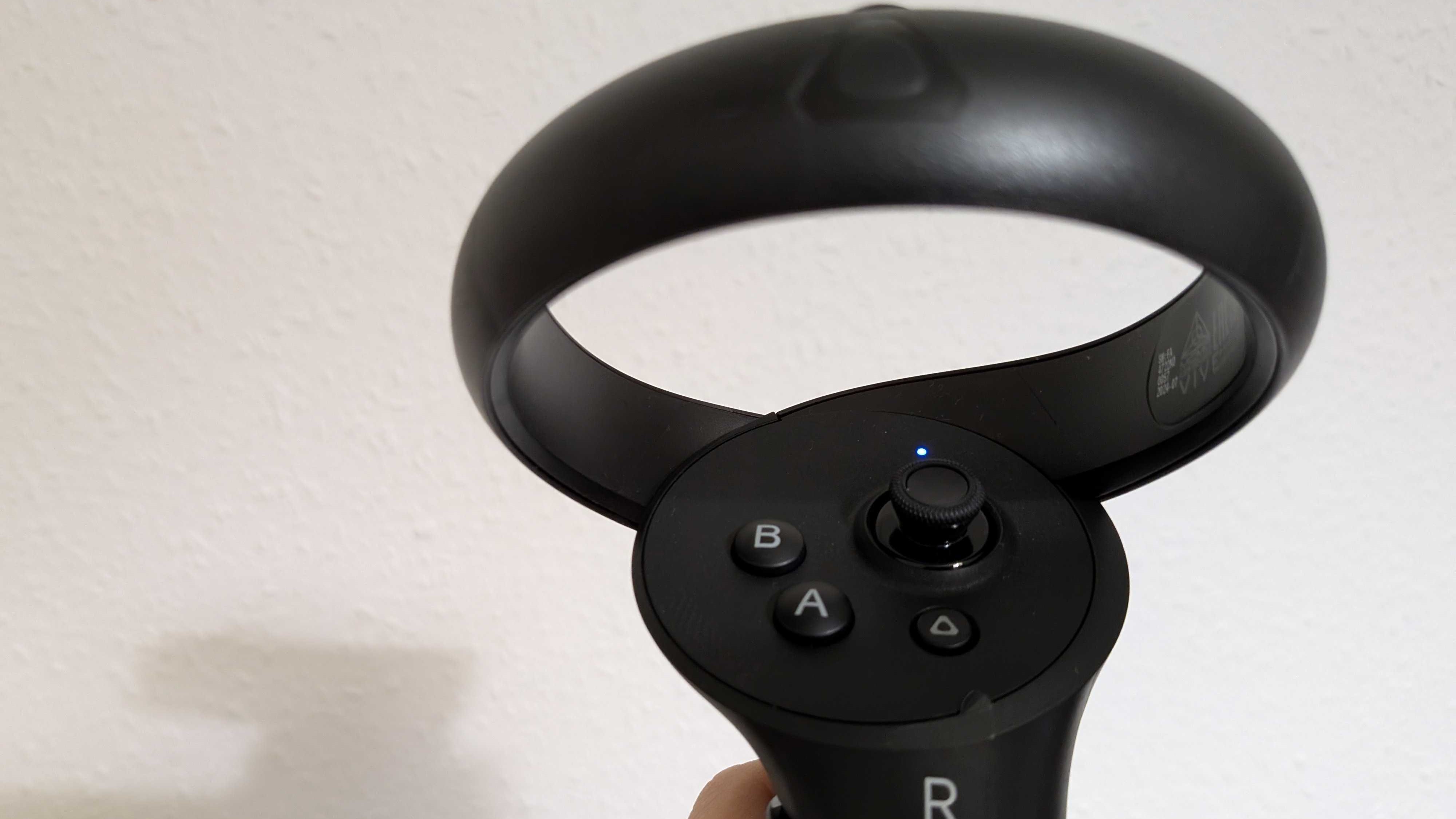HTC Vive Focus Vision review: I had high hopes for this hybrid VR headset, but it left me wanting more
HTC Vive Focus Vision: two-minute review
As a professional device I can see the appeal of the Vive Focus Vision. The simultaneously standalone and high-end PCVR headset offers a versatility its rivals don’t – which will be well suited to the diverse needs of a work environment. Plus its easy-to-clean material, intuitive controls, and eye-tracking for automatic lens adjustments will benefit a use case in which different people (of different VR experience levels) will be jumping in and out of the headset’s experiences – and who may not have their own dedicated machine.
However, I’m not reviewing this headset as a professional device.
Instead, I’m tasked with looking at whether it stands up as a consumer headset, and whether it does enough to justify its $999 / £999 price tag and convince people to buy it over the Meta Quest 3 (or Quest 3S, or a non-Meta alternative). TL;DR, I don’t think Vive makes a compelling enough case.
The two main options for VR headsets are PCVR headsets (those which connect to a PC and serve as effectively a wearable display, as the processing is done by a computer) or standalone headsets (which are all-in-one units with displays and their own processing power). Most standalone headsets can also be used for PCVR, but with typically less impressive displays they aren't as good for this purpose as proper PCVR headsets.
With its effective 5K display resolution and DisplayPort compatibly via the Wired Streaming Kit (which facilitates improved data transfer rates for higher image quality) the Vive Focus Vision attempts to market itself as a full-on hybrid of the two VR headset types. Unfortuantely, it also has several flaws that are impossible to ignore, and which mean it's neither an excellent standalone or PCVR headset, or even an excellent hybrid.
I’ll get into the problems in more detail in this review, but briefly, the headset isn’t the comfiest, boasts outdated specs which feels a little odd for a 2024 flagship, and (most importantly) doesn’t have a software catalogue that comes close to rivalling that of the Meta Quest. And fundamentally, what’s the point in paying more for a headset that (for consumers) does less than a cheaper alternative?
I was supremely excited to try the Vive Focus Vision because of the jack-of-all trades approach it promised, but unfortunately it has simply proven itself a master of none.
HTC Vive Focus Vision review: Price and availability
- Headset costs $999 / £999
- Available since October 2024
- Look out for deals which including the excellent Streaming Kit for free
The HTC Vive Focus Vision launched on 18 October 2024 and is available to buy now. You can pick up the Vive Focus Vision headset on its own for $999 / £999, with the Wired Streaming Kit coming in at an additional $149 / £159.
The headset comes with a battery, straps, controllers, 30W power adapter and charging cable and a lens-cleaning cloth as standard, while the Streaming Kit adds a DisplayPort-compatible cable and converter.
That Streaming Kit is a massive benefit for PCVR, so unless you need the headset immediately or don't mind paying extra, I’d recommend waiting for a deal which bundles the two together for no extra cost. We’ve seen this deal before, so it’s likely to return; stay patient and keep an eye out for it if you want to save a not-insignificant amount.
- Value score: 3/5
HTC Vive Focus Vision review: Specs
HTC Vive Focus Vision review: Design
- Rechargeable battery is a nice touch
- Heavier than Quest 3
- Not comfortable for long sessions
Out of the gate the Vive Focus Vision makes some excellent design choices. The adjustable plastic strap ensures the headset maintains a stable position on your head, its removable battery allows you to easily swap in a new one if you want to extend your play sessions without waiting for a recharge, and the padding is an easy-to-clean PU leather material which makes this device perfect for sharing with friends or family – or working out in VR.
Beyond this, the Vive Focus Vision boasts a decidedly standard design, rather than following the more interesting headset/glasses transforming setup of the Vive XR Elite. This in and of itself is nothing to complain about, but despite chasing a more typical build, the Vive Focus Vision makes a few disappointing mistakes.

At 785g the headset is heavier than the Quest 3 (515g), but lighter than PCVR headsets such as the Valve Index (810g) and Pimax Crystal Light (815g). That extra weight vs the Quest is noticeable, and while the issue could have been mitigated with a well-balanced weight distribution and sufficiently padded cushions, the Focus Vision ultimately doesn’t do a good enough job in these regards.
While it does well with the former by moving the battery to the back of the strap, so it serves as a counterbalance to the display unit sitting on your face, the padding isn’t sufficient. The pad on the back of the head strap feels paper-thin – providing effectively zero cushioning from the solid battery housed inside – and it simply isn’t comfy for extended periods of time (I’m talking 15 minutes or more).
The other issue is the fresnel lens choice. Fresnel lenses are bulkier than their increasingly popular pancake lens rivals, leading to a thicker front box on your face. What's more, fresnel lenses cause visual distortion at the fringes of the lens. This means you need to physically turn to see virtual objects at your periphery, rather than simply moving your eyes like you would in real life, which can be immersion-breaking.

I’m also not a fan of the controllers. While they’re fundamentally very similar to those on basically all other modern VR handsets (with regards to the button placements) they felt unnecessarily chunky and the long handle always felt kinda clunky next to the streamlined Meta Quest 3 or Pico 4S controllers.
- Design score: 3/5
HTC Vive Focus Vision review: Performance
- Last gen chipset is disappointing
- DisplayPort is a major upgrade...
- ...but comes at an added cost
For PCVR, the Vive Focus Vision’s DisplayPort compatibility via its Streaming kit was something I was excited to experience. This more direct connection with your PC’s graphics card allows for higher frame rates and resolutions, because you’re not as restricted as you might be via a typical HDMI- or USB-C-to-USB-C connection.
It was also very simple to set up by simply following the Vive Hub app’s instructions – so don’t be put off by the various connector cables in the box, it will all make perfect sense when you do it.
The end result is a PCVR experience that takes full-advantage of the roughly 5K combined resolution of the 2,448 x 2,448 pixel-per-eye displays. It's noticeably better overall than any other standalone headsets I’ve relied on previously, including the Meta Quest 3 – which not only lacks DisplayPort compatibility, but which only boasts two 2064 x 2208 pixel-per-eye displays. The only downside of this tool is it is an added expense at $149 / £159, which is a significant additional cost on an already pricey headset. Although as I say above, you can sometimes find it bundled with the headset for free.
It’s worth noting, too, that the PCVR experience will be determined by your PC’s specs. With aged hardware, the DisplayPort upgrade won’t seem as significant as it will for someone running an Nvidia RTX 40-series GPU.
Unfortunately I don't have as many positives to levy at the headset’s standalone performance. That’s because the Vive Focus Vision relies on the now years-old Snapdragon XR 2 Gen 1 chipset – the previous model of the chipset found in the Meta Quest 3, Quest 3S, and Pico 4 Ultra, to name a few.

Seeing this in the specs sheet was a massive surprise, so much so that when I first wrote about the Focus Vision I unconsiously added a “Gen 2” at the end because I was so used to only seeing the most recent model in new headsets.
This is a major disappointment, as it means the standalone apps don’t look as visually impressive as they would on rival VR headsets – which is a shame, because while even the XR 2 Gen 2 wouldn’t be able to take full advantage of the Focus Vision’s screens, it would at least do a better job than its Gen 1 sibling.
While I understand the Vive Focus Vision does boast some other enhancements – more on that in a second – it's borderline inexcusable for a 2024 standalone headset with a price of $999 / £999 to not have the most recent XR2 chipset.
At least the Vive Focus Vision boasts a few neat extras, including eye-tracking – which facilitates automatic IPD adjustments, and eye-tracking support in compatible games – and full-color mixed reality.
On that topic, the mixed reality is in a word: fine. It’s neither noticeably worse nor better than what’s offered by a Meta Quest 3 or Quest 3S, which is to say it’s definitely not life-like, but it's believable enough when you’re distracted by engaging with virtual objects.
Lastly, I’ll add here that the Vive Focus Vision is compatible with optional additional facial and external trackers for full-body rigging to bring a virtual avatar’s face and body to life. I haven’t tested this feature, but it is an option you’ll be able to take advantage of in apps like VRChat if you want to.
- Performance score: 3/5
HTC Vive Focus Vision review: Software
- Full access to Vive and Steam VR software on PC
- Standalone software library is disappointing
- Clean operating system
For PCVR the Vive Focus Vision should be able to facilitate the vast majority of experiences given its feature set, with the deciding factor being your PC’s specs – though this is true of most PC-compatible VR headsets.
Where this VR headset shows its weaknesses is when it comes to standalone software. The titles it offers are fine – you’ll find a few delightful options across the full range of VR game and app genres – but it simply doesn’t compete with the biggest name in the space: Meta’s Horizon OS.

The Vive system, unfortunately, doesn’t have meaningful rivals to titles such as Batman: Arkham Shadow, Asgard’s Wrath 2, and so many more other found in Meta's store. Many of these are either only available on Quest headsets, or are on a few other VR devices but skip Vive’s.
This is a problem for every non-Meta headset, admittedly, but it immediately relegates devices such as the Vive Focus Vision to at best second-place – because it’s impossible to recommend a headset when you know a different VR device can offer a wider range of better experiences.
In the Focus Vision's case, it's in an even worse place – because even if it did have some solid Meta alternatives, the weaker specs would make it an inferior option for people after standalone XR excellence. Some modern titles might even be completely incompatible.
At least the Vive headset’s operating system is generally clean and as intuitive to navigate as other VR headsets I’ve tried.
- Software score: 3/5
Should you buy the HTC Vive Focus Vision?
Buy it if
You want a hybrid
The Vive Focus Vision’s strength is as a headset for both PCVR or standalone VR experiences, rather than being a master of either.
You want to share the headset
Eye-tracking makes it easy to adjust the IPD settings, and the easy-to-clean materials make wiping this headset down a breeze – so it’s perfect as a headset that’s shared between people.
Don’t buy it if
You’re not getting the Streaming Kit
The DisplayPort connection compatibility afforded by the Wired Streaming Kit is easily the Vive Focus Vision’s best PCVR feature.
You want the best standalone headset
With outdated specs and a lackluster library of software, this isn’t the headset to buy if you want a premium standalone VR experience.
How I tested the Vive Focus Vision
I tested the Vive Focus Vision for a couple of weeks, using it to play a handful of standalone and PCVR apps across various play sessions. I also made sure to boot it up alongside my Meta Quest 3 (which I use frequently), so I could easily swap between the headsets to compare their abilities.
For my PCVR gameplay, I used a PC equipped with an Nvidia RTX 4060 Ti 16GB.
0 comments:
Post a Comment